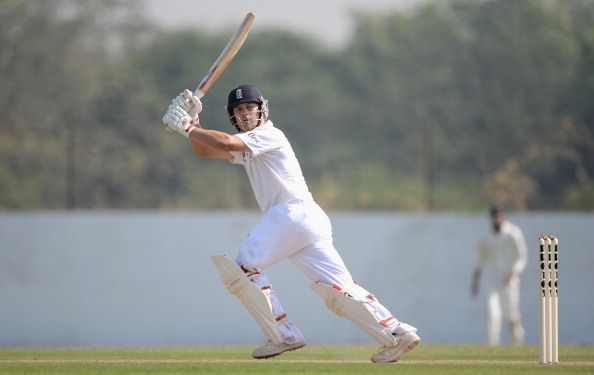
On the Trott incident

The fourth day of the final test in the India – England test series was, according to some, gripping cricket; and according to others, drab cricket. Whichever camp you belong to, there was one incident in the day that you would classify as one of those that has purists shaking their heads with the it’s just not cricket expression on their faces.
Much has been said about that particular incident and what it means – on the face of it and indeed when reading between the lines. For those of you who missed it, the incident was quite simply this: Ravindra Jadeja ran up to bowl. The ball gripped a little too much in his hand (perhaps, that is the only place the ball grips this test match; certainly, it does not, on the pitch). As a result, the ball bounced more than the allowed once; many times, actually. It landed up close to short leg. Jonathan Trott went after it and, in true hickey style, drag flicked it it to the boundary. The ball was declared a no-ball and England got five runs.
There was a furor about the spirit of the game. Virat Kohli had a go at Trott with his customary BCs amd MCs thrown in. Commentators were divided on the subject, and column inches and air waves were occupied to cover the subject.
Well, let’s look at the incident objectively. Look at it from the batsman’s point of view. Every batsman wants to score runs. Of that, there can be no doubt. Quite simply put, that is precisely what Jonathan did. He saw four free test runs. So, he thought, why not?! Fair enough, what? If one were batting on a pitch that is slow, doing nothing much, one would be assumed to be comfortable. However, when the game is a test of patience as much as it is a test of skill, as this test match is, a break such as that would be most welcome. If not anything else, just to release the pressure; break the monotony, so to speak.
From the point of view of the purists, it was quite simply that it was uncalled for. It was something that is or never should be a part of an institution as pristine as Test cricket. In a one day game or a T20, perhaps, it is commonplace, acceptable even, but in Test cricket? One might as well go about giving free hits when no-balls are bowled, they would argue. Perhaps they have a point.
Test cricket is this wonderful thing that preserves the spirit of cricket. Or so some think. Many of these people are those who still believe that flying is for the birds and sliced bread is the greatest invention known to man. This chronicler begs to differ.
Test cricket is something that is essentially cricket. Perhaps the purest form of the game. Of that, there is no doubt. However, as with everything else, change is the only thing that is constant. Test cricket is no exception. Test cricket has changed; evolved. One must come to terms with this. Run outs occur more frequently now. Strike rates of 70 plus are commonplace. 300 plus on a day does not bat too many an eyelid. Impatience is celebrated as game-changing.
Openers do not merely see out the new ball now. They attack it. The bowling is opened with a spinner; sometimes with two. There is diving on the field. The boundary ropes are covered with advertising; there are big screens. Yet, at the heart of it, Test cricket is Test cricket.
One must accept that and move on. Forget about debating on the merits of Trott’s actions and the implications of that particular piece of play. Accept it as being a piece of a larger picture – on in which the game has evolved to include things that were never traditionally part of cricket. The spirit of the game, however, will always live on.
Just look on this as a blot on the landscape. Perhaps this is just not cricket but this is now just part of cricket.